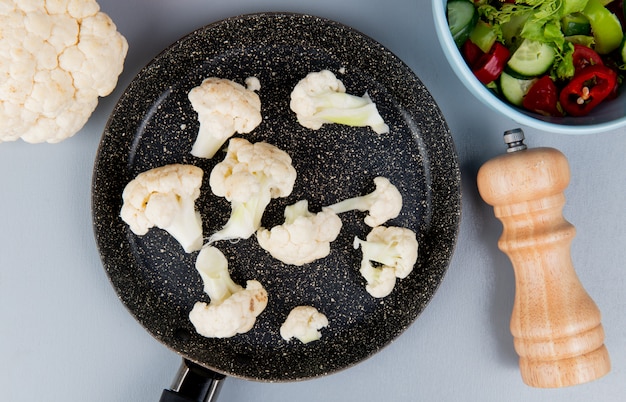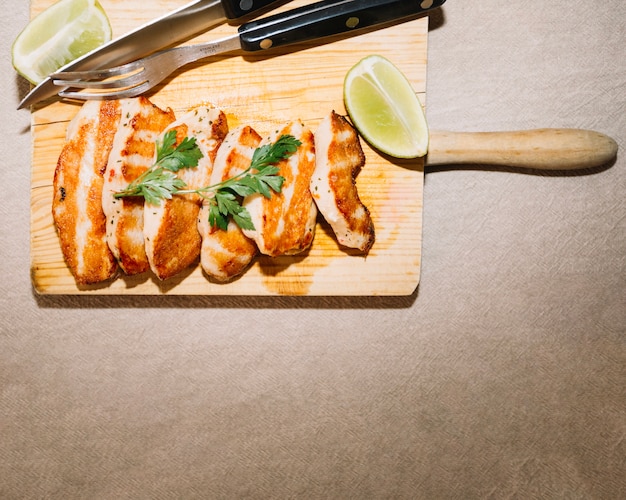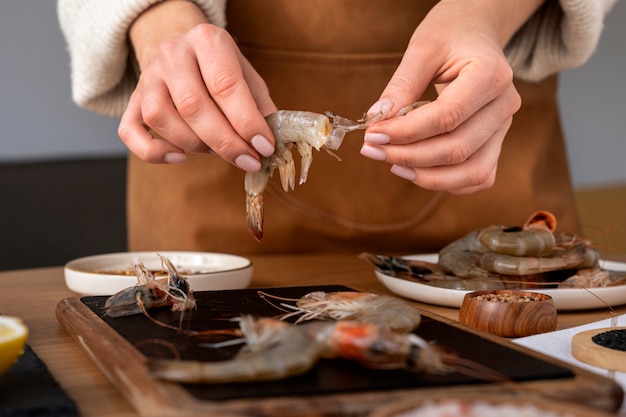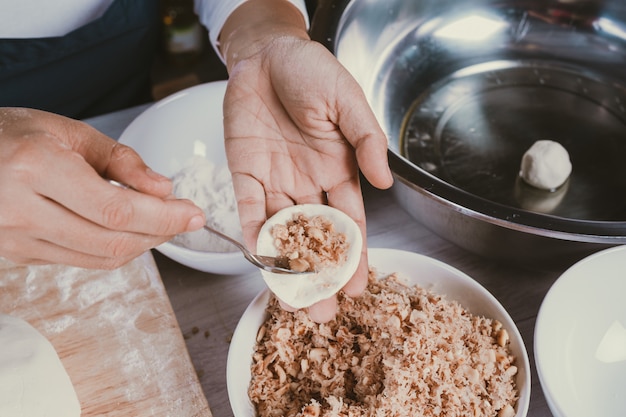Scallops hold a special place in my culinary heart. Their delicate sweetness and tender texture, when perfectly cooked, are simply divine. But for years, I was intimidated by the idea of cooking them myself. I imagined them turning rubbery and tough, and honestly, the fear of failure kept me from even trying.
Then, one day, I decided to ditch the fear and give it a shot. I found a recipe for pan-seared scallops, and much to my surprise, it was ridiculously simple. The results? Absolutely phenomenal! Perfectly cooked scallops with a beautiful, golden-brown sear, bursting with flavor. I was hooked, and so began my journey of becoming a scallop-searing master.
This article is more than just a recipe. It's a culmination of my personal experiences and extensive research, designed to empower you to conquer the art of pan-searing scallops. We'll embark on a journey together, from choosing the right scallops and prepping them like a pro, to crafting that perfect sear that unlocks their natural sweetness. We'll even explore some exciting flavor-boosting techniques that elevate this dish from good to downright spectacular. Get ready, because you're about to become a scallop-searing champion.
(Part 1) Choosing the Right Scallops

The first step to a successful scallop dish is choosing the right ones. Just like picking a fine wine, understanding the nuances of different scallop varieties can make all the difference.
Understanding Scallop Varieties
Not all scallops are created equal. Each variety brings its unique flavor and texture to the table. Here's a breakdown of the most common types you'll encounter:
- bay scallops: These are the petite darlings of the scallop world. Their size is their defining feature, and they offer a delicate sweetness that melts in your mouth. Typically found in the Gulf of Mexico and along the Atlantic coast, they're often considered the "classic" scallop for their light, elegant flavor.
- sea scallops: These are the workhorses of the scallop family. Larger and meatier than their bay cousins, they offer a more pronounced flavor and a satisfying chew. You'll find them in both the North Atlantic and Pacific Oceans, and they're a favorite among chefs for their versatility.
- giant scallops: These are the big boys, the heavyweights of the scallop world. They are significantly larger than both bay and sea scallops, with an intensely rich flavor. Primarily found in the North Atlantic, these scallops are typically more expensive, but their luxurious flavor justifies the price tag.
Freshness is King (or Queen, as the case may be)
When it comes to scallops, freshness reigns supreme. You want to choose scallops that are firm to the touch, with a clean, ocean-fresh aroma. Imagine the crisp scent of the sea air – that's the smell you're looking for! Avoid any scallops that feel soft or mushy, and definitely stay away from those with a strong fishy odor. That's a sure sign of staleness. The scallops should also be evenly sized, with a pearly white color.
Frozen vs. Fresh: A Debate Worthy of a Seafood Sommelier
The frozen vs. fresh scallop debate is a common one, and honestly, both sides have valid arguments. Ultimately, it comes down to personal preference and what you're looking for in your dish.
fresh scallops: They are the gold standard, offering the most vibrant flavor and delicate texture. But, like a delicate bloom, they have a shorter shelf life and tend to be pricier.
frozen scallops: They are a great, budget-friendly alternative, offering a longer shelf life and consistent quality. However, they might not have the same intensity of flavor or texture as their fresh counterparts.
My personal preference? Fresh scallops, especially when I'm aiming for the ultimate flavor experience. But if budget or availability are concerns, frozen scallops are a perfectly acceptable option. Just make sure to thaw them in the refrigerator overnight – never at room temperature, as this can encourage bacterial growth.
(Part 2) Preparing Your Scallops: A Transformation from Rough to Ready

Once you've chosen your scallops, it's time to get them ready for their starring role in your culinary masterpiece. This involves a few simple steps to ensure they are clean, dry, and free from any pesky bits that could interfere with a perfect sear.
Cleaning and Patting Dry: A Quick Rinse to Freshen Up
Before you even think about the skillet, give your scallops a quick rinse under cold running water. This helps remove any grit or impurities that may be clinging to them. Gently rub them with your fingers to ensure they're thoroughly cleaned. You can also use a damp paper towel to remove any stubborn debris. Once they're sparkling clean, pat them dry with paper towels. This is crucial for achieving a beautiful golden-brown sear, as moisture can steam rather than sear the scallops.
Removing the Muscle: A Tiny Detail with a Big Impact
Most scallops come with a small, tough muscle attached to the side. While it's not inherently harmful, it can be chewy and detract from the overall eating experience. It's best to remove it before cooking, and luckily, it's a very simple process. Grab the muscle with a paper towel and pull it away from the scallop – it should come off easily.
Size Doesn't Matter (Much): Scallops of All Shapes and Sizes
Don't be intimidated by scallops of varying sizes. It's completely normal! Just adjust your cooking time slightly. Smaller scallops might only need 1-2 minutes per side, while larger ones may require a bit more time. The important thing is to make sure they're cooked through without overdoing it.
Seasoning to Perfection: Less is More with These Delicate Gems
The beauty of scallops lies in their delicate flavor. You don't need to go overboard with seasoning; a simple sprinkle of salt and pepper is often all they need to shine. If you want to add a touch of zest, a squeeze of lemon juice or a drizzle of olive oil can elevate their natural sweetness. Remember, the goal is to enhance, not overpower, the delicate flavors of these culinary gems.
(Part 3) The Art of Pan-Searing: Mastering the Perfect Sear

The key to unlocking the true potential of scallops lies in the art of pan-searing. It's a technique that transforms these delicate morsels into a symphony of textures and flavors. Here's how to create a beautiful, golden-brown sear that will have your taste buds singing.
Heating Your Pan: A Hot Pan is Your Best Friend
A hot pan is essential for a perfect sear. My go-to choice is a cast-iron skillet – it retains heat beautifully and creates a beautiful, crispy crust. But if you don't have a cast-iron skillet, a heavy-bottomed stainless steel pan will work just fine. Heat your chosen pan over medium-high heat for 3-4 minutes. You'll know it's ready when a drop of water sizzles and evaporates instantly.
Adding Fat: A Luxurious Coating for a Golden Crust
To prevent sticking and ensure a nice, even sear, add a generous amount of fat to your pan. I typically use a combination of butter and olive oil. The butter adds a rich flavor and aroma that's simply irresistible, while the olive oil helps to prevent the butter from burning. Let the fat melt and heat up for a minute or two before you start cooking. This will ensure the pan is adequately lubricated and ready to embrace your scallops.
Don't Crowd the Pan: Give Your Scallops Room to Breathe
One of the biggest mistakes people make when pan-searing scallops is crowding the pan. This can lead to uneven cooking and a steamed, rather than seared, result. To avoid this, cook your scallops in batches. Make sure to leave enough space between each scallop so they have room to cook properly. This will allow the heat to distribute evenly, ensuring each scallop gets that golden-brown sear on both sides.
Searing Time: A Dance of Heat and Timing
Once the pan is hot and the fat is shimmering, carefully place the scallops in the pan. Don't move them for the first 2-3 minutes. This will allow the bottom to form a nice, crispy sear. After 2-3 minutes, use a spatula to gently flip the scallops over. They should be golden brown on one side and slightly opaque. Cook the scallops for another 2-3 minutes on the second side. They should be cooked through and have a firm texture.
To test if your scallops are cooked through, gently press the center of one with a finger. If it feels firm and springs back, it's ready. Avoid overcooking, as this can make them tough and rubbery.
(Part 4) Flavour-Boosting Techniques: Elevating Your Scallop Game
Pan-searing is a fantastic foundation, but there's always room for a little extra magic. Here are some simple flavor-boosting techniques that will transform your scallops from good to extraordinary.
Citrus Squeeze: A Burst of Freshness
A simple squeeze of lemon juice or lime juice can add a burst of freshness and acidity to your pan-seared scallops. Add it to the pan right before you remove the scallops, or drizzle it on top after they're cooked. The citrus will cut through the richness of the scallops and create a delicious balance of flavors.
Herbs and Spices: Aromatic Delights
A sprinkle of fresh herbs like thyme, rosemary, or parsley can elevate the flavor of your scallops. You can also add a pinch of paprika, garlic powder, or smoked paprika to add a bit of depth and complexity to the dish. For a more intense flavor, try adding a small knob of butter infused with herbs like garlic, rosemary, or thyme. The possibilities are endless – experiment and find your favorite flavor combinations.
Wine Deglaze: A Simple Technique with Big Results
For a touch of sophistication and extra flavor, deglaze the pan after you remove the scallops. This involves adding a splash of white wine or broth to the pan and scraping up the browned bits from the bottom. This creates a delicious sauce that you can spoon over your scallops. The wine or broth will pick up the flavors from the pan, creating a rich and flavorful sauce that enhances the dish.
Roasted Garlic Butter: Indulgent Luxury in Every Bite
Take your scallops to another level with roasted garlic butter. Simply roast a head of garlic in the oven for about 40 minutes. Then, squeeze the roasted garlic cloves into a bowl of softened butter. Add a sprinkle of salt and pepper, and blend together. Spoon this decadent mixture over your scallops, allowing the warm butter to melt and coat them in flavor. The roasted garlic will infuse the butter with a sweet, savory flavor that's simply irresistible.
Finishing Touches: A Final Sprinkle of Magic
For the ultimate finishing touch, try sprinkling your pan-seared scallops with a pinch of flaky sea salt or black pepper. This adds a final touch of flavor and visual appeal. The flaky sea salt adds a touch of crunch and a salty kiss to the scallops, while the black pepper adds a subtle heat that complements the delicate flavors.
(Part 5) Serving Suggestions: Pairing Scallops with Delightful Companions
Pan-seared scallops are incredibly versatile and can be paired with a variety of sides. Here are a few of my favorite combinations that create a harmonious symphony of flavors and textures.
Creamy Risotto: A Classic Pairing
The rich, creamy texture of risotto is a perfect complement to the delicate sweetness of scallops. Opt for a classic mushroom risotto or experiment with different flavors like lemon or truffle. The risotto will provide a comforting and luxurious base for the scallops, creating a balanced and satisfying meal.
Roasted Vegetables: A Burst of Color and Flavor
Roasted vegetables like asparagus, broccoli, Brussels sprouts, or carrots provide a satisfying crunch and a delightful array of colors to your plate. They'll add a contrasting texture and a fresh, seasonal element to the dish. Roast them with herbs and spices to enhance their natural flavors.
Green Salad: A Refreshing Counterpoint
A light and refreshing green salad with a simple vinaigrette cuts through the richness of the scallops. Choose greens like romaine, arugula, or spinach, and add some colorful vegetables like cherry tomatoes or cucumbers. The salad will add a vibrant touch of freshness and balance the richness of the scallops, creating a well-rounded meal.
Pasta with Lemon Sauce: A Light and Zesty Combination
A simple pasta dish with a light lemon sauce is a delicious and easy way to pair with scallops. The acidity of the lemon sauce balances the sweetness of the scallops, creating a harmonious flavor profile. Choose a pasta shape that complements the scallops, like angel hair or linguine.
(Part 6) Beyond the Dinner Plate: Scallops for Every Occasion
Pan-seared scallops aren't just for fancy dinners. Their versatility allows them to grace a variety of occasions. Here are some ideas to incorporate scallops into different parts of your culinary repertoire.
Appetizers: A Taste of Luxury
Smaller scallops can be quickly seared and served as a delightful appetizer. Pair them with a simple dipping sauce like aioli or lemon butter. These bite-sized morsels will impress your guests and set the stage for a delicious meal.
Lunch: A Light and Satisfying Option
Make a light and satisfying lunch by serving scallops on a bed of greens with a drizzle of dressing. You can also add some chopped vegetables or a sprinkle of toasted nuts for added texture and flavor. This is a healthy and flavorful way to enjoy scallops during the day.
Brunch: A Touch of Elegance
Yes, even brunch can benefit from the elegance of scallops. Combine seared scallops with creamy eggs Benedict, or add them to a classic Caesar salad for a more upscale brunch experience. The scallops will add a touch of sophistication and luxury to your brunch spread.
(Part 7) A Scallop-Searing Cheat Sheet: Your Guide to Success
To make your scallop-searing journey even smoother, here's a handy cheat sheet with everything you need to know, from equipment to tips.
Equipment
- Cast-iron skillet or heavy-bottomed stainless steel pan
- Spatula
- Tongs
- Cutting board
- Paper towels
Ingredients
- Scallops (fresh or frozen)
- Butter
- Olive oil
- Salt and pepper
- Optional: Lemon juice, lime juice, herbs, spices, white wine or broth
Instructions
- Clean and pat dry the scallops.
- Remove the muscle (if present).
- Season the scallops with salt and pepper.
- Heat a cast-iron skillet or heavy-bottomed stainless steel pan over medium-high heat.
- Add a generous amount of butter and olive oil to the pan.
- Let the fat melt and heat up for a minute or two.
- Carefully place the scallops in the pan, leaving enough space between each scallop.
- Don't move the scallops for the first 2-3 minutes.
- Use a spatula to gently flip the scallops over.
- Cook for another 2-3 minutes on the second side.
- Remove the scallops from the pan and serve immediately.
Tips
- Don't overcrowd the pan. Give your scallops room to breathe and cook evenly.
- Don't overcook the scallops. They should be cooked through but still tender. A slight "give" in the center is a good indication of doneness.
- Use a thermometer to ensure the scallops reach an internal temperature of 140°F (60°C). This will ensure they are cooked through and safe to eat.
- Be creative with your flavor combinations. Don't be afraid to experiment with different herbs, spices, citrus juices, and sauces to find your favorite combinations.
(Part 8) FAQs: Answers to Your Burning Scallop Questions
What is the best way to store scallops?
Fresh scallops should be stored in the refrigerator for up to 2 days. Place them in a single layer on a plate lined with paper towels. This allows air to circulate around them, preserving their freshness. Frozen scallops should be stored in the freezer for up to 3 months. Make sure to seal them tightly in freezer-safe bags or containers to prevent freezer burn.
What happens if I overcook scallops?
Overcooked scallops will be tough and rubbery. They will also lose their delicate sweetness and become dry. To avoid overcooking, cook them for a shorter amount of time, and use a thermometer to check the internal temperature. Aim for a slight "give" in the center, which indicates they are cooked through but still tender.
Can I pan-sear scallops in a non-stick pan?
While non-stick pans are great for cooking other foods, they are not ideal for pan-searing scallops. This is because the high heat can damage the non-stick coating. A cast-iron skillet or a heavy-bottomed stainless steel pan is the best choice for pan-searing scallops. These pans can withstand high heat and promote a beautiful, even sear.
Can I use frozen scallops for pan-searing?
Yes, you can use frozen scallops for pan-searing. Just make sure to thaw them in the refrigerator overnight. Never thaw them at room temperature. This will prevent them from becoming mushy and ensure they cook evenly.
What are some other ways to cook scallops?
Scallops can be cooked in a variety of ways, including grilling, broiling, baking, and roasting. You can also add them to soups, stews, and pasta dishes. Experiment with different cooking methods to discover your favorite ways to enjoy these versatile seafood gems.
So, there you have it! Everything you need to know about pan-searing scallops, from choosing the right ones to achieving a perfect sear and exploring exciting flavor combinations. Now, go forth and conquer the art of scallop-searing! You'll be surprised at how easy and delicious it can be. Happy cooking!
Everyone is watching

How to Cook Frozen Lobster Tails Perfectly: A Step-by-Step Guide
RecipesLobster. Just the word conjures up images of lavish meals, special occasions, and a taste of luxury. But let's...

Pigs in a Blanket Cooking Time: How Long to Bake for Perfect Results
RecipesAh, pigs in a blanket. Just the name conjures up images of those delightful little parcels of crispy pastry en...

Pork Fillet Cooking Time: How Long to Cook It Perfectly
RecipesPork fillet, or tenderloin as it's sometimes called, is a real favourite in our house. It's so versatile, and...

The Ultimate Guide to Tender, Juicy Pulled Pork
RecipesRight, let's talk pulled pork. It's one of those dishes that just screams "comfort food," doesn't it? I mean...

The Ultimate Guide to Cooking Delicious Frankfurters
RecipesLet's face it, we all love a good frankfurter. It's a classic, simple, and always satisfying. But let's be rea...
